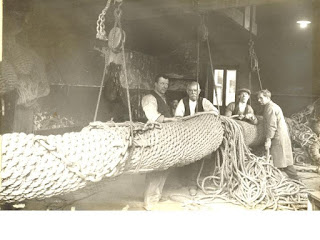The launch this week of The Survey of Woolwich was a great success - and the book itself even more so. Various people are sending their impressions and report about the launch and the book. So - some are given below and some will be added in - first of all - here's the invite:
ENGLISH HERITAGE invites you to a reception in WOOLWICH TOWN HALL,
in the presence of The Mayor of the Royal Borough of Greenwich, Councillor David Grant to mark the publication of
Survey of London volume 48: Woolwich
for English Heritage by Yale University Press on behalf of the Paul Mellon Centre for Studies in British Art
So - what have people got to say? - and why is it so important? First Mayor, David Grant, who opened the event:

"The publication of the English Heritage Survey is a very important moment for Woolwich, which is at last showing the signs of development and growth which it has long needed. The book itself is magnificent and the borough has been fortunate in being given three copies - one for the public library in Woolwich, one for the Heritage Centre and one for the staff library in the Woolwich Centre. It is a very worthwhile read, even though at £75 a copy it is beyond most people's reach to buy".
and now a contribution from veteran Greenwich historian (and ex-councillor) Darrell Spurgeon:
"They could have chosen Deptford, they could have chosen Greenwich. Instead English Heritage’s Survey of London chose Woolwich for their first venture into South East London. It was an inspired choice, for Woolwich has a fantastic history –military, municipal and manufacturing, retaining a fine ensemble of buildings relating to that history. Most of that history is of course industrial or has industrial associations.
Mary has written about the book launch at the Town Hall on Monday this week, so has Richard Buchanan. I too was lucky to have been invited. It was a great occasion, with good speeches from the Mayor, David Grant, and from senior English Heritage personalities - Simon Thurley, Andrew Saint, and the main author, Peter Guillery.
What a wonderful book! You would of course expect it to be, with over 500 pages, over 400 illustrations, and at a price tag of £75. But it is even better than I had expected!
Darrell Spurgeon
and - next - a much longer piece from our regular contributor Richard Buchanan
English Heritage hosted a reception at Woolwich Town Hall on 26th November 2012 to launch the Woolwich volume of the Survey of London. The invitation itself was handsome, and featured a detail of an electrolier from the main hall of the Town Hall.
Peter Guillery is stated in the preamble of the book to be its Editor - a term which in this case includes principal researcher and writer – he was of course at the launch. Once the company had assembled, Andrew Saint, the General Editor of the Survey of London, opened the proceedings. He welcomed everyone; and went on to say how they had decided some years ago that it was high time that a Survey was done south of the Thames – Battersea being in mind - until Peter said Woolwich had a stronger case.
For the last several years Peter Guillery has been a genial face in Woolwich, reading voraciously and talking to anyone with any knowledge of the Parish. Many of these were present, particularly from the Council, the Heritage Centre, the Woolwich Antiquarian Society and the Royal Artillery.
Councillor David Grant, the Mayor of the Royal Borough of Greenwich, gave a short but heartfelt speech. Simon Thurley, Chief Executive of the English Heritage then spoke. The royal connections of Woolwich, as distinct from Greenwich, were paraded. The Woolwich Survey in draft form, without illustrations, has been on the internet since the spring, so speakers (and many present) had had time to see the text and gave it great praise.
Peter Guillery himself spoke, saying how helpful people had been, and named his principal contributors.
The publishers, Yale University Press, had a table in a corner, and were selling the book (at the wholesale price). Notwithstanding its presence on the internet, the book, very handsomely produced, could not be resisted and many copies weere bought.
I first read an eleven page article written by Peter Guillery in the Greenwich Historical Society’s Journal Vol.2 No.3 of 2000, about the buildings on Park Vista, Greenwich - and was impressed. The Woolwich Survey, of 446 pages (with another 70 for references & index), is to the same high standard throughout.
The Survey covers the Parish of Woolwich, which is a roughly triangular area between Woolwich Dockyard, the Arsenal and the western slope of Shooters Hill. An exception was made to include the historic part of the Arsenal that extends over the parish boundary. It is an impressive book intended to expound what is known, from as early as can be ascertained, to the present – who built what and when, what difficulties they faced, the social problems, who demolished what, and so on. Many sources were consulted, though often a single reference at the end of a paragraph will list several relevant documents. It is well illustrated with photographs and drawings, some specially commissioned. This is one of the most significant books ever to have been published on Woolwich.
Richard Buchanan
More to follow ..........................................





























